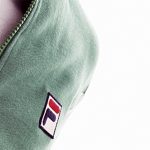The Organic Trade Association (OTA) applauded the U.S. Department of Agriculture National Organic Program (USDAs NOP) for its May 20 Policy Memorandum addressing the labeling of textile products containing organic ingredients (such as organic cotton, organic wool, and organic linen).
The new policy supersedes the July 2008 NOP fact sheet entitled Labeling of Textiles under National Organic Program (NOP) Regulations.
This latest memo, Labeling of Textiles that Contain Organic Ingredients, confirms that processed textile products such as apparel, mattresses, or socks labeled as organic must be third-party certified, and all fibers identified as organic contained in the textile product must be certified organic to the NOP regulations.
The NOP Policy Memo also clarifies that while the NOP regulations do not include specific processing or manufacturing standards for textile products, a product can be labeled as organic and make reference to NOP certification if it is produced in full compliance with both the NOP production standards (crops and livestock for raw materials) and the NOP handling standards (processing for the finished product). This includes all processing methods allowed under 7 CFR 205.270 and all ingredients and inputs allowed under 205.605 and 205.606 of the National List.
However, as most of these methods and ingredients are not applicable to textile processing, NOP labeling is likely unachievable for most garments and textile products that use a variety of dyestuffs and auxiliary agents.
GOTS standard recognized
Additional correspondence with the NOP clarified that made with organic (specified ingredient) is a codified labeling category under the NOP as well as a labeling category under GOTS. Accordingly, textile manufactures choosing to make a fiber content claim in accordance with the FTC labeling requirements should use terminology such as contains 80% organic cotton. The NOP labeling requirements are in addition to those required by the Federal Trade Commission (FTC) labeling requirements.
We are excited USDA is recognizing the rapidly growing organic fiber sector in general and GOTS in particular, thus enabling organic textile manufacturers to make production and processing claims just as manufacturers of organic food and beverages can, said Christine Bushway, OTA‟s Executive Director.
GOTS Coordinator Herbert Ladwig agreed. We welcome and support USDA‟s new policy which officially and explicitly confirms that the use of the GOTS label organic for textiles is accepted. Experts from around the world have worked for years to make GOTS a stringent and comprehensive organic textile standard. Government recognition underlines its increasing leading role worldwide.
The policy memo was added to the online NOP Handbook that provides guidance and instructions to assist those who own, manage, or certify organic operations in complying with the NOP regulations.
Field to Finished Product Organic
According to the GOTS International Working Group (GOTS IWG) public database of facilities certified to GOTS, approximately 1,500 companies with a total of 2,754 facilities in 54 countries around the world were certified to the organic apparel and textile standard by the end of 2010. The top twenty countries based on the number of GOTS-certified facilities are (in order of ranking): India, Turkey, China, Pakistan, South Korea, Japan, Germany, Italy, United Kingdom, Bangladesh, France, Hong Kong, Mauritius, Peru, USA, Netherlands, Sri Lanka, Portugal, Greece, and Belgium. Countries in which facilities were certified to GOTS for the first time in 2010 included Finland, the Lao People’s Democratic Republic, Latvia, Macedonia, Sweden, and Uganda.
The database includes almost 400 dyeing facilities, more than 200 spinning, knitting, and weaving units, and approximately 140 printing and manufacturing facilities. While more than 700 companies are listed with an export business, currently about 50 import operations hold GOTS certificates as well. Fourteen independent certification organizations around the world are qualified to certify operations to the standard.
The GOTS IWG is made up of the Organic Trade Association (U.S.), the Japan Organic Cotton Association, International Association Natural Textile Industry (Germany), and the Soil Association (UK).















